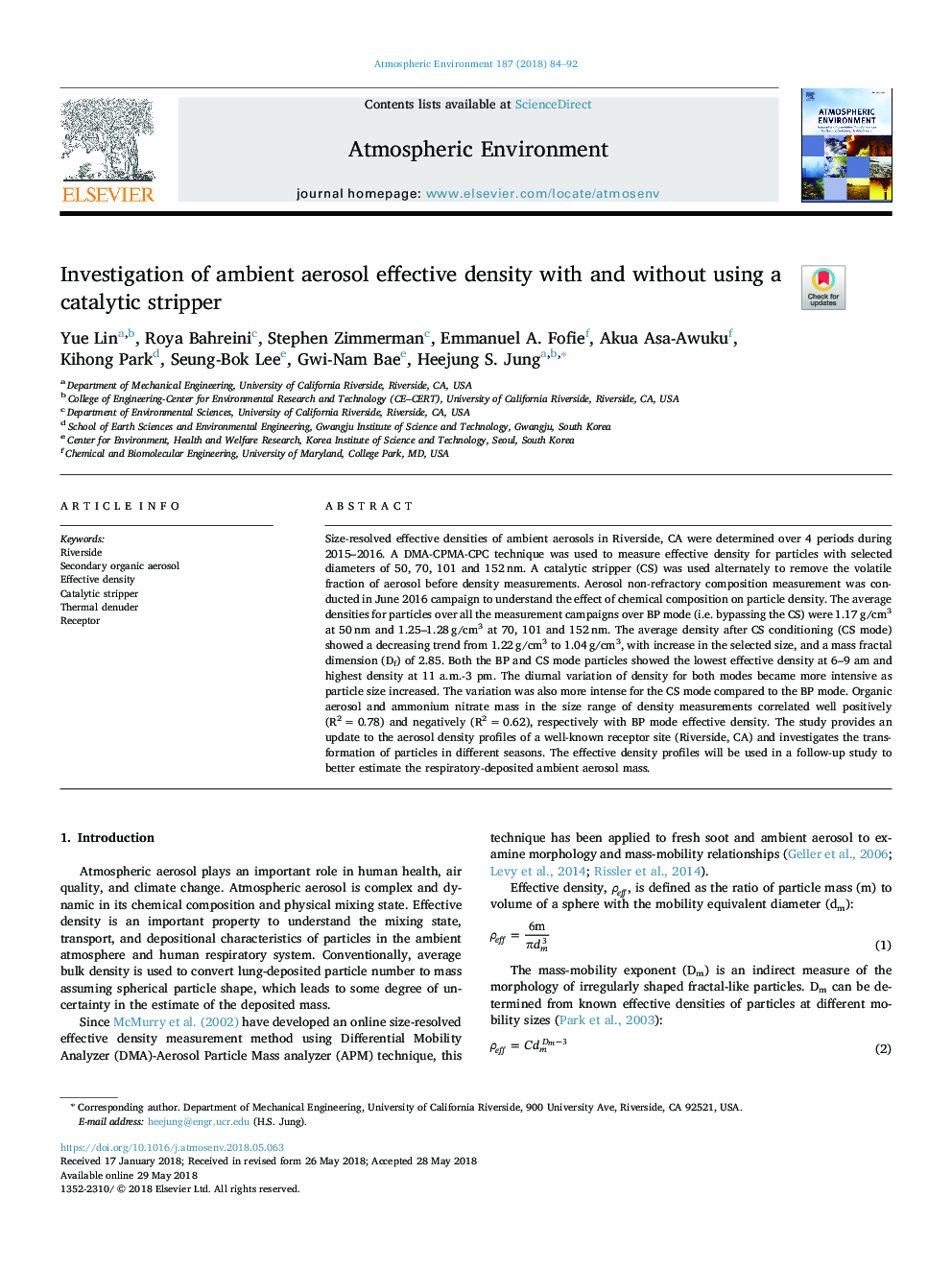| Article ID | Journal | Published Year | Pages | File Type |
|---|---|---|---|---|
| 8863601 | Atmospheric Environment | 2018 | 9 Pages |
Abstract
Size-resolved effective densities of ambient aerosols in Riverside, CA were determined over 4 periods during 2015-2016. A DMA-CPMA-CPC technique was used to measure effective density for particles with selected diameters of 50, 70, 101 and 152â¯nm. A catalytic stripper (CS) was used alternately to remove the volatile fraction of aerosol before density measurements. Aerosol non-refractory composition measurement was conducted in June 2016 campaign to understand the effect of chemical composition on particle density. The average densities for particles over all the measurement campaigns over BP mode (i.e. bypassing the CS) were 1.17â¯g/cm3 at 50â¯nm and 1.25-1.28â¯g/cm3 at 70, 101 and 152â¯nm. The average density after CS conditioning (CS mode) showed a decreasing trend from 1.22â¯g/cm3 to 1.04â¯g/cm3, with increase in the selected size, and a mass fractal dimension (Df) of 2.85. Both the BP and CS mode particles showed the lowest effective density at 6-9 am and highest density at 11 a.m.-3 pm. The diurnal variation of density for both modes became more intensive as particle size increased. The variation was also more intense for the CS mode compared to the BP mode. Organic aerosol and ammonium nitrate mass in the size range of density measurements correlated well positively (R2â¯=â¯0.78) and negatively (R2â¯=â¯0.62), respectively with BP mode effective density. The study provides an update to the aerosol density profiles of a well-known receptor site (Riverside, CA) and investigates the transformation of particles in different seasons. The effective density profiles will be used in a follow-up study to better estimate the respiratory-deposited ambient aerosol mass.
Related Topics
Physical Sciences and Engineering
Earth and Planetary Sciences
Atmospheric Science
Authors
Yue Lin, Roya Bahreini, Stephen Zimmerman, Emmanuel A. Fofie, Akua Asa-Awuku, Kihong Park, Seung-Bok Lee, Gwi-Nam Bae, Heejung S. Jung,
